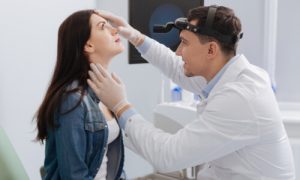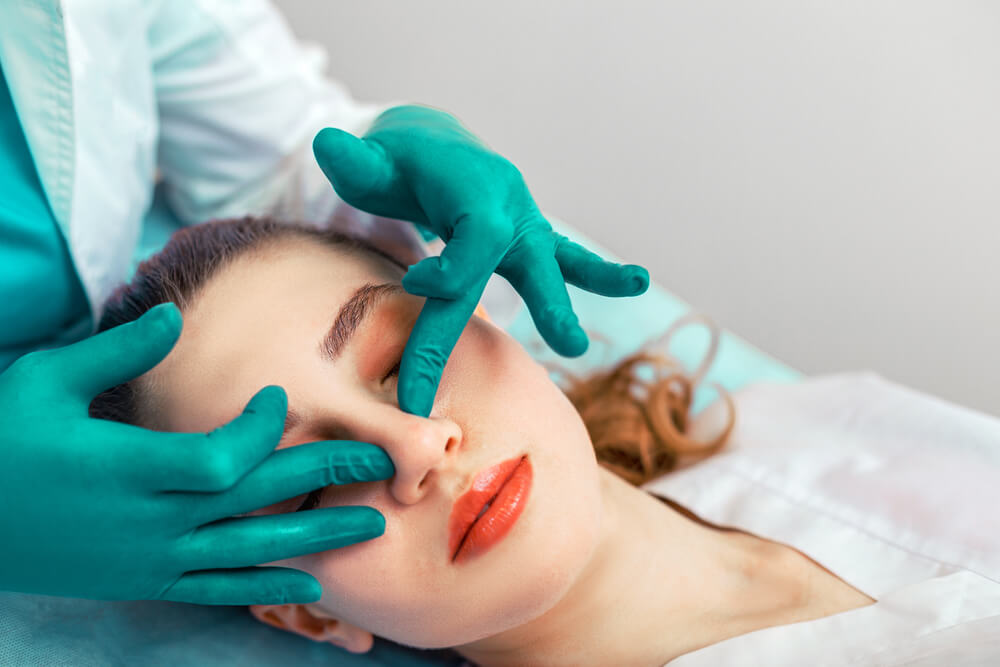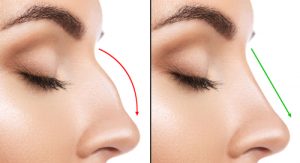If you’re considering rhinoplasty , it’s essential to understand what you can expect in the days and weeks after your procedure. Swelling is a common side effect of rhinoplasty and can take some time to dissipate. This blog post will discuss the various rhinoplasty swelling stages and how long they typically last. We’ll also provide tips for reducing swelling and speeding up the healing process.
Rhinoplasty swelling and healing stages timeline
Immediately After Surgery:
After your rhinoplasty , you will likely experience some swelling and bruising. This is normal and to be expected. Your doctor will place a splint on your nose to help support it and minimize swelling. You may also have drainage tubes placed in your nostrils to help drain any excess fluid.
Days One to Three:
The swelling and bruising will peak during the first few days after . You may also experience some pain and discomfort during this time. Your doctor will prescribe medication to help manage any pain or discomfort you may be feeling.
Days Three to Five:
The swelling and bruising should dissipate by day three or four post-op. The drainage tubes are usually removed on day three or four as well.
One Week Post-op:
Most of the swelling and bruising should be gone by this time. You may still have some residual swelling, but it should be significantly less than it was in the days immediately following .
How long does a nose job take to heal?
The healing process for nose can vary from person to person. Generally, it takes about two to six weeks for most of the swelling to dissipate and results to become visible. However, it can take up to a year for all of the swelling post rhinoplasties to completely resolve and for the final results to be apparent. Exaggeration of minor asymmetries by uneven swelling is typical. Fine-tuning the shape with injections, taping at night, or your doctor may recommend specific massage techniques during the rhinoplasty recovery process.
How can I reduce swelling after rhinoplasty?
There are several things you can do to help reduce swelling after rhinoplasty:
-Sleep with your head elevated on pillows: This will help minimize swelling by keeping fluid from accumulating in your face and nose.
-Apply ice packs: Applying ice packs to your face 20 minutes at a time can also help reduce swelling.
-Avoid strenuous activity: It’s essential to avoid any strenuous activity or exercise for at least the first week after .
-Eat a Healthy Diet rich Vitamins, minerals and protein to speed up healing.
Platelet rich plasma (PRP) in rhinoplasty
PRP is a concentration of platelets and growth factors derived from your blood. PRP has been shown to promote healing and reduce swelling after . Your doctor may recommend PRP therapy as part of your rhinoplasty recovery plan.
If you’re considering rhinoplasty, it’s essential to understand the recovery process and what you can expect in the days and weeks following . Swelling is a common side effect of rhinoplasty, but understanding the timeline can help you better prepare for recovery. Most people can recover from rhinoplasty without significant complications with proper care and precautions.
How much swelling is normal after rhinoplasty?
The amount of swelling depends on a case to case basis. Some people may experience more than others. You should consult your doctor if you think your swelling is more than normal or is not subsiding.
Is nose tip swelling normal?
Swelling is a common side effect of rhinoplasty and can take some time to dissipate. .So yes, nose tip swelling is normal and should subside within the first three months.
What should I avoid after rhinoplasty?
There are several things you should avoid after rhinoplasty :
-Strenuous activity or exercise: It’s essential to avoid any strenuous activity or exercise for at least the first week after .
-Blowing your nose: You should avoid blowing your nose for at least the first week after .
-Drinking through a straw: Drinking through a straw can cause unnecessary pressure on your healing nose and should be avoided for at least the first week after .
When will I see results from my rhinoplasty?
It can take up to a year for all of the swellings to completely resolve and for the final results of to be apparent. However, most people see significant improvement within the first few months.
Will I need rhinoplasty revision ?
Although rhinoplasty is a very successful , revision rhinoplasty may be necessary in some cases. Revision rhinoplasty is a more complex than primary rhinoplasty and should only be performed by an experienced doctor. If you’re considering rhinoplasty, it’s essential to understand the recovery process and what you can expect in the days and weeks following . Swelling is a common side effect of rhinoplasty, but understanding the timeline can help you better prepare for recovery. Most people can recover from rhinoplasty without significant complications with proper care and precautions. A person considering this procedure may have questions before committing to rhinoplasty , which is normal.
Return to work or school
After rhinoplasty? Most people can return to work or school within a week after rhinoplasty, but avoiding any strenuous activity or exercise for at least the first week is essential.
When can I wear makeup after rhinoplasty?
You should avoid wearing makeup for at least the first week after . This is because the wound may take time to heal and you can easily irritate it by touching.
When will my tip drop after rhinoplasty?
Your nasal tip will drop within the first few days after rhinoplasty, If you’re considering rhinoplasty, it’s essential to understand the recovery process and what you can expect in the days and weeks following . It can take up to a year for all of the swellings to completely resolve and for the final results of to be apparent. However, most people see significant improvement within the first few months.In conclusion,the rhinoplasty recovery process can vary from person to person, but above mentioned are some guidelines to follow
References:
https://www.webmd.com/beauty/cosmetic-procedures-nose-job-rhinoplasty
https://www.mayoclinic.org/tests-procedures/rhinoplasty/about/pac-20384532






